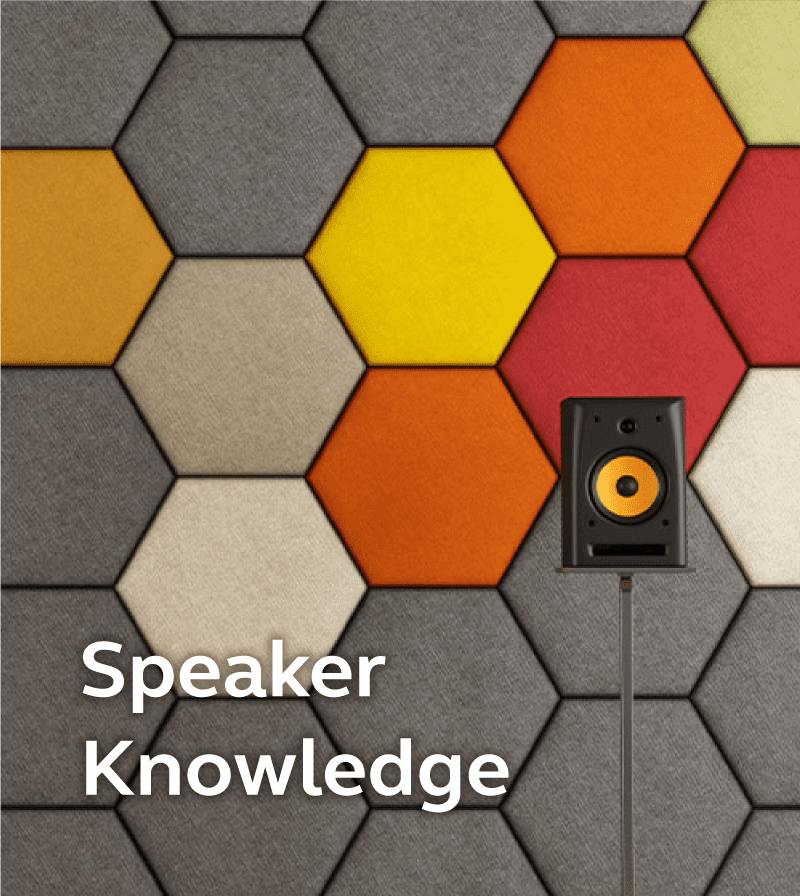Vehicle technology never stops improving, whether it is security, navigation, and even electric performance. So it would make sense for some of the significant parts of the automotive components to improve as tech becomes more accessible and performs. This is the case for automotive audio technology. Indeed, once an afterthought in the car industry, car audio technology is now benefiting from the trend of intelligent consumer electronic, portable devices; the attention of industrial development is shifting to improve the sound experience inside the vehicles.
How good is your car audio system for 2023? Jazz Hipster explores the main car audio trends this year and how to bring your sound system to the next level.

The Automotive Audio Technology Trends
There is more to automotive audio technology than meets the eye (or, more precisely, the ear). Therefore, when it comes to managing sounds in a vehicle, the priority is to fully understand the diverse car audio trends available in the current market.
Multi-functional car audio technology
Indeed, car audio technology serves more than one purpose. In contrast, the first thought that comes to mind when considering car audio technology is the quality of the music, audio while driving can also provide directional assistance, such as navigation or sensor-related beeping while maneuvering, for instance. Car audio becomes more than a case of entertaining the drivers and the passengers. It has a strong functional element, enhancing security behind the steering wheel.
New Levels of Car Audio Entertainment
When everyone and their grandmother can listen to their favorite songs directly on their smartphones, it makes sense for car sound systems to be built with compatibility and streaming in mind. Pre-integrated audio features that enable a smooth connection with the driver’s phones are a no-brainer for car manufacturers. Streaming is gaining popularity over physical storage devices.
This will also include enhancing the experience of audio in the vehicle in a way to mimic the interactive experience people have in luxury audio environments.
A Personalized Audio Experience
Imagine the perfect playlist with music that reflects your mood and your preferences. Creating a playlist for the drive is one thing. But car audio technology should also be able to pre-define sound modes based on individual users’ preferences. For instance, some systems, such as Harman, can save advanced audio settings for individual users, creating a personalized cloud-based audio platform. Others, such as Volkswagen or the Bentley’s Continental GT, have mood options that can choose music to suit the driver, selecting from a range of mood settings such as Pure, Chill-out, Energetic, or Bright.
High Quality Car Audio Systems
More and more car manufacturers are moving away from standard audio solutions to partner with audio experts. For example, Renault partnered with Bose Corporation for the new Renault Clio. Multi-speaker setup, advanced audio technology, and dedicated sound processing are the pinnacle of the latest car audio trends. Ultimately, manufacturers have learned to value the sound experience in a car, focusing on quality equipment over OEM-fitted solutions.
3 Things That Will Affect Automotive Audio
Automotive audio technology needs to evolve not only to meet more present and advanced sound requirements but also to address the changing factors within the car industry. Indeed, cars nowadays are not the same as they used to be, and therefore, car audio tech must face new challenges.
Wind & Road Noise
As car performance constantly evolves and increases, more vehicles are hitting high performance on the road. Yet the cost of faster 0 to 60 times has repercussions for the in-car audio system. Fast driving vehicles move a lot of air, which creates loud wind noises. Ultimately, the fastest a car moves, the loudest the wind noise becomes.
Where does wind sound come from? There are multiple explanations for the car aerodynamics, the change in air pressure, and the car door seals. It can lead to a loud wind noise inside the car, which makes it hard to enjoy your audio system.
Traffic noise typically falls between 55 and 120 decibels, depending on other traffic on the road. For comparison purposes:
- A car idle in a traffic jam could reach up to 47 dB.
- At 65mph, a car’s loudness is between 65 and 73 dB.
- Motorbikes can be as loud as 85dB or louder for specialist engines.
- Sirens peak at 120 dB.
The typical car stereo system is around 75 to 80 dB, barely enough to cover some driving vehicles. But motorbikes and sirens are still going to be louder than your car audio system.
Road works and driving past construction sites can also create a lot of noise, likely louder than your car audio. However, turning the volume up is not an option, as you could lose not only sound quality but also damage your hearing.
Noise prioritizing
If you struggle to listen to audio cues when the music is on, you probably understand what noise prioritization means. Picture the scene: Loud music, loud traffic, and you’re trying to reverse into a parking spot. Yet you can’t hear the reverse beeps. That’s what prioritizing noises is about; it is designed to ensure your car audio system knows which sounds to emphasize and which not, depending on the situation.
A similar case of noise prioritizing also includes managing multiple expectations simultaneously. For instance, while the driver needs to hear audio cues for parking, the passengers could continue to enjoy the music. So how can car audio technology handle this challenge?
Silent Cars
Electric vehicles are the future. However, as electric vehicles are gradually gaining popularity, drivers are the first to notice the absence of engine sounds. Pedestrians and other vehicles on the road can also be tricked into a false sense of safety because they can’t hear the approaching vehicle. So, can automotive audio technology address this issue safely and effectively?
Automotive Audio Technology Used in Car Audio Systems Today
Nowadays, car audio technology has been addressing external noise disruptions through heavy undercoating and padding, adding weight to the vehicle. However, this has two adverse effects: it lowers the performance and can drain the battery faster. Yet, this approach needs to evolve and include elements used in noise-canceling headphones to adjust to electric vehicles.
It is common for car owners to upgrade their car audio solutions with high quality speakers, which can improve the output quality. While it doesn’t cover loud external sounds, superior speakers can maintain sound clarity and quality when the volume is turned up and reduce disruption.
Typically, when it comes to prioritizing sounds, the head unit, the controller at the core of the car audio technology, is able to prioritize sounds effectively. It means turning the music volume down or stopping the music for audio cues or when the driver receives a phone call (if the call is transmitted via the head unit). However, when the music stops, it stops for everyone in the vehicle, including passengers.
Some EVs have also considered the importance of warning sounds to counterbalance the silent engine. Oscar-winning composer Hans Zimmer worked with BMW on the silent range, creating a spaceship-like humming to warn pedestrians and cyclists. Yet, many car manufacturers still need to develop clear vehicle audio signatures.
How Audio Technology Improves Automotive Audio in the Future
As car audio technology addresses the challenges of today, it also opens the door to opportunities for the future. Today’s trends and needs are already shaping the future of automotive audio trends.
Noise-Canceling Automotive Audio Technology
From loud music to audio navigation cues, it becomes crucial for automotive audio technology to appreciate the role of sounds while driving. And this means pristine quality output and the ability to create an audio system that remains audible regardless of the car performance. No driver wants surrounding sounds, from external elements to a fast engine, to take over the audio system. Bringing noise-canceling technology to the car audio system can not only improve the performance of the vehicle but also makes it easier to selectively cancel some noises, hence adding personalization to existing noise prioritization.
Creating Audio Zones
Should the music stop when the driver needs to listen to a different audio notification? If you ask a driver, the answer will be yes. However, creating zoned audio solutions could ensure that passengers can continue to enjoy the music entertainment while the driver is focused on their audio cues. This could provide a much more immersive experience.
Emotional Attachment Vehicle Signature Audio
Ultimately, while every driver appreciates the crucial environmental role of electric vehicles, many still miss the sounds of a fuel-powered engine. Creating signature sounds for each vehicle, such as adding engine sounds to the acceleration, could unlock new levels of emotional connections between car owners and their vehicles.
Fully Immersive Car Audio Technology
As more car manufacturers are looking at new solutions to provide better quality sound systems, the next challenge is immersiveness. An immersive audio experience means heightened sound quality and bringing the sound to every seat with equal clarity and loudness. Tools, nowadays, can visualize the car audio system data, auralize and tune it to amplify the in-car experience. This doesn’t need to stop at music, but can also share acoustical data across the car interior, essentially tuning every aspect of the vehicle.
Making Audio Technology More Social
When the driver takes a call via the head unit, passengers can hear the call. But they cannot respond to the call, which forces the drivers to be attentive to the phone conversation. Car audio technology that enables passengers to engage with the call from their seats could not only lessen the burden for the driver but also ensure the audio technology is spread to every occupant of the car.
Self-Setting Car Audio Systems
Using OBA (object-based audio) technology as part of the car audio solution essentially maps out the vehicle audio scene to calculate the relevant speaker signals. This eliminates the need for manual setups to enjoy different music or audio files.
Audio Cues For Self-Driving Vehicles
While cars nowadays are not fully autonomous, the development of self-driving vehicles is still happening. In a scenario where the car is autonomous or semi-autonomous, audio cues need to be shared with the passengers if they need to take back control and respond to new notifications.




